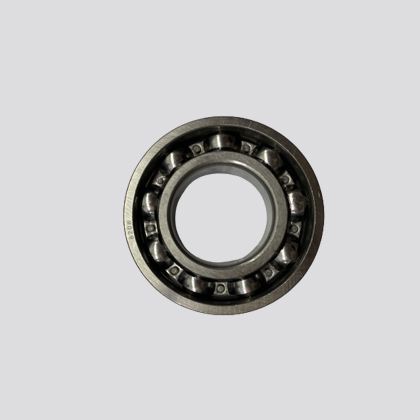
Bearing by size
When searching for bearings by size, it’s essential to consider the following steps:
1. Identify Inner Diameter (ID): Measure the inner diameter of the bearing housing or shaft where the bearing will be installed. This measurement will determine the size of the bearing’s inner race.
2. Determine Bearing Type: Decide whether you need a ball bearing, roller bearing (such as cylindrical, tapered, or spherical), or a specialty bearing for your specific application.
3. Calculate Width (or Thickness): Determine the width or thickness of the bearing required for your application. This measurement is crucial for ensuring proper clearance and load-carrying capacity.
4. Determine Outer Diameter (OD): Measure the outer diameter of the bearing housing or the bore of the component where the bearing will be mounted. This measurement corresponds to the size of the bearing’s outer race.
5. Select Bearing Type and Configuration: Based on the measured dimensions and application requirements, choose the appropriate bearing type, configuration, and load capacity (e.g., radial, thrust, or combined load) to meet your specific needs.
6. Check Tolerance and Fit:
Consider the tolerance and fit requirements for the bearing installation. Consult bearing manufacturer specifications or industry standards to ensure proper fit and alignment.
7. Consult Manufacturer Resources: Utilize manufacturer catalogs, online resources, or technical support services to find bearings that match your size requirements and application specifications.
8. Verify Compatibility: Double-check the selected bearing’s compatibility with other components in the assembly, such as shafts, housings, seals, and lubricants, to ensure optimal performance and longevity.
9. Review Lubrication Requirements: Take into account the lubrication requirements of the bearings, including the type of lubricant, lubrication interval, and method of lubrication. Proper lubrication is essential for maintaining bearing performance and extending service life.
10. Consider Load and Speed Ratings: Evaluate the load and speed ratings of the bearings to ensure they can withstand the operating conditions of your application. Choose bearings with appropriate ratings to accommodate the expected loads, speeds, and operating environments.
11. Evaluate Mounting and Installation: Assess the mounting and installation requirements for the bearings, including shaft and housing tolerances, alignment procedures, and mounting methods. Proper installation is critical for ensuring bearing reliability and preventing premature failure.
12. Check Environmental Conditions: Consider the environmental conditions in which the bearings will operate, such as temperature, humidity, and exposure to contaminants. Select bearings with suitable materials, seals, and coatings to withstand the specific environmental challenges of your application.
13. Consider Application-Specific Requirements: Take into account any unique or application-specific requirements that may influence bearing selection, such as noise levels, vibration tolerance, or regulatory compliance. Choose bearings that meet all relevant performance criteria for your specific application.
14. Explore Special Features: Investigate any special features or enhancements offered by bearing manufacturers, such as seals, shields, coatings, or anti-corrosion treatments. These features can enhance bearing performance and durability in challenging operating conditions.
15. Seek Expert Advice if Needed: If you’re unsure about which bearings to choose or if you encounter complex application requirements, don’t hesitate to seek expert advice from bearing suppliers, engineers, or technical specialists. They can provide valuable insights and recommendations to help you select the best bearings for your application.
16. Evaluate Cost and Availability: Compare the cost and availability of different bearing options, considering factors such as initial purchase price, maintenance requirements, and availability of replacement parts. Balance the upfront cost with long-term reliability and performance to make the most cost-effective decision.
By following these additional considerations and best practices, you can further refine your bearing selection process and ensure that you choose the most suitable bearings to meet the size requirements and performance demands of your application.
NSAR group company and have our own factories overseas
NSAR bearings management team of managers, engineers, and technical staff have 15 – 25 years experience. We supply customers with bearings not only produced in our own factory, but also produced in professional bearings plants designated by NSAR brand to meet customers’ different requirements, such as pillow block bearings,we have designated a factory in northern China, which has perfect testing equipment and can develop products to customer needs very rapidly. Miniature bearings are arranged in the factory in southern China, which has enjoyed a good reputation long term in producing miniature bearings.
As a professional factory that produces professional products, with professional people doing professional things, our foreign customers have declared: “NSAR bearings have reached a domestic first-class and international brand-name quality, and NSAR bearing prices are 30-50% lower than international similar bearings.”
NSAR, as best 6300 bearings supplier, wholesale deep groove ball bearings, inlcuding wholesale 6308 bearings, wholesale 6307 bearing, 6306 bearings, wholesale 6305 bearing, 6304 bearings, 6302 bearings, 6309 bearings, 6311 bearings and deep groove ball bearings for household appliance and micro-motors supplies wholesale needs,products download.
These are just a few examples of companies in China that manufacture deep groove ball bearings. It’s important to conduct thorough research and consider factors such as product quality, reliability, and pricing when selecting a supplier.

